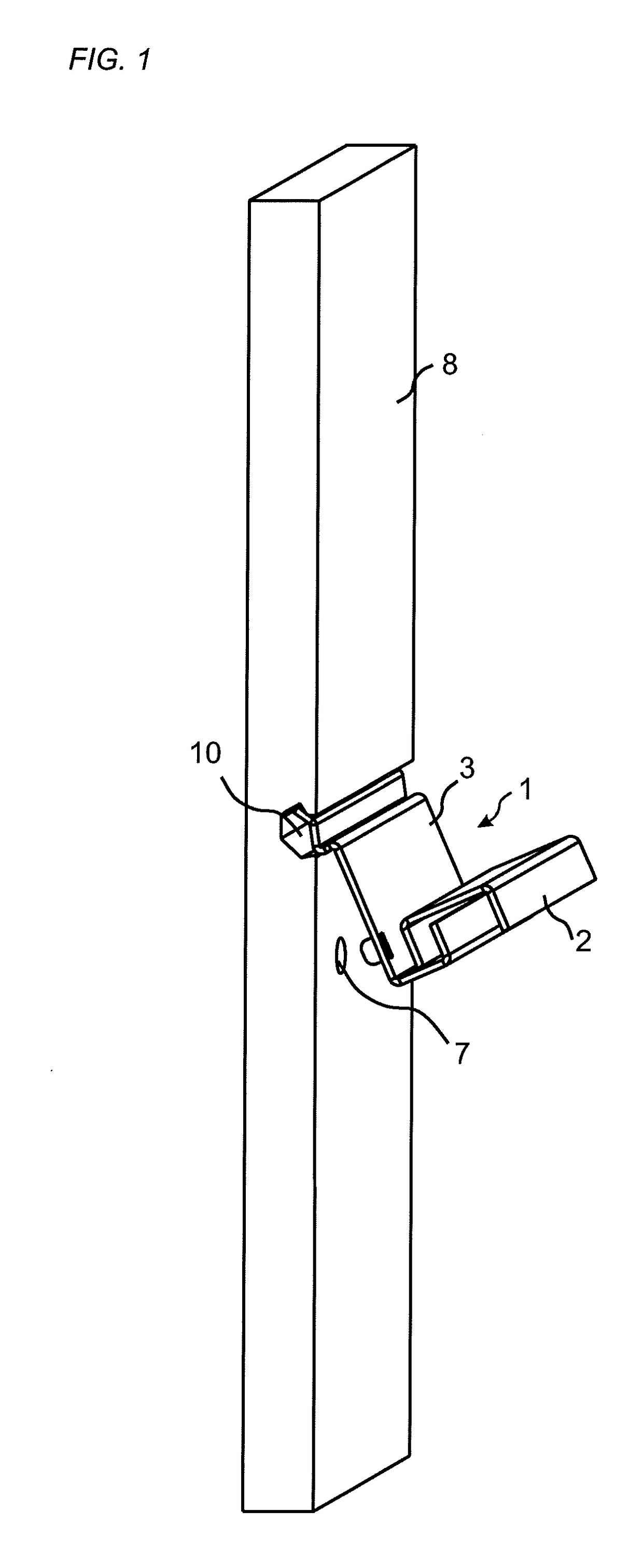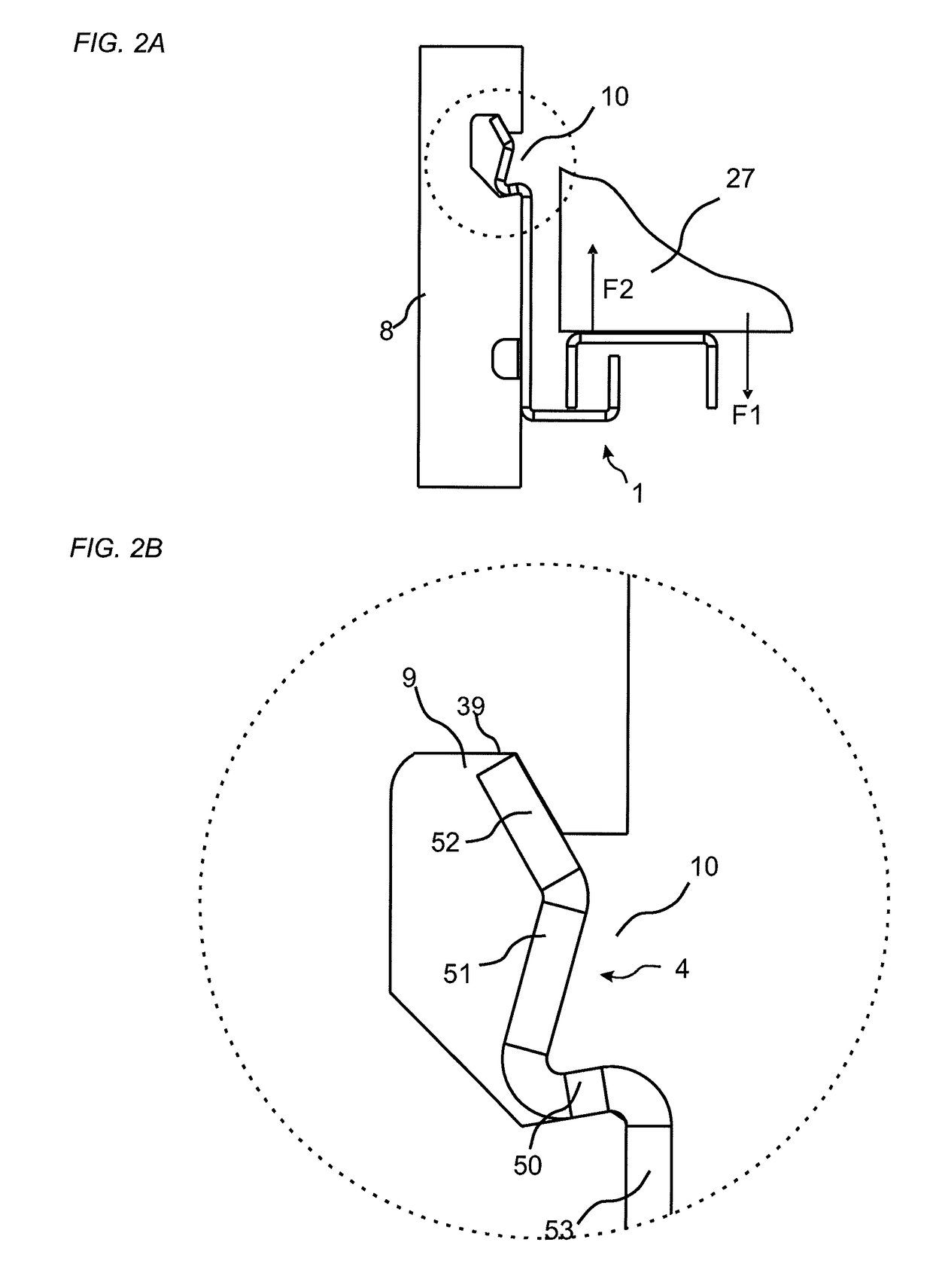Panel with a slider
- Summary
- Abstract
- Description
- Claims
- Application Information
AI Technical Summary
Benefits of technology
Problems solved by technology
Method used
Image
Examples
Embodiment Construction
[0035]An embodiment of the invention is shown in FIG. 1 during assembling and in an assembled position in FIG. 2A. FIG. 2B shows an enlargement of the encircled area of FIG. 2A, which shows a schematic drawing of a panel 8 and a slider 1. The embodiment includes a set, which may be a part of a furniture or kitchen furnishing, comprising a panel 8 and a slider 1, such as a drawer slider. FIG. 3A shows the slider parts of FIG. 2B and FIG. 3B shows the panel parts of FIG. 2B. The panel may be of a rectangular shape and arranged such that it extends in a vertical direction. The slider may comprise an inner part 3, which is assembled to the panel, and an outer part, which is configure to be connected to a drawer (schematically shown in FIG. 2B). The outer part is displaceable relative the inner part. The slider comprises a slider surface 15 and the panel comprising a panel surface 16, as is shown in FIGS. 3A and 3B, respectively. The slider is configured to be assembled to the panel with...
PUM
| Property | Measurement | Unit |
|---|---|---|
| Angle | aaaaa | aaaaa |
| Distance | aaaaa | aaaaa |
Abstract
Description
Claims
Application Information
 Login to View More
Login to View More - R&D
- Intellectual Property
- Life Sciences
- Materials
- Tech Scout
- Unparalleled Data Quality
- Higher Quality Content
- 60% Fewer Hallucinations
Browse by: Latest US Patents, China's latest patents, Technical Efficacy Thesaurus, Application Domain, Technology Topic, Popular Technical Reports.
© 2025 PatSnap. All rights reserved.Legal|Privacy policy|Modern Slavery Act Transparency Statement|Sitemap|About US| Contact US: help@patsnap.com



